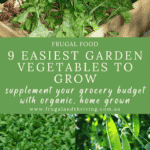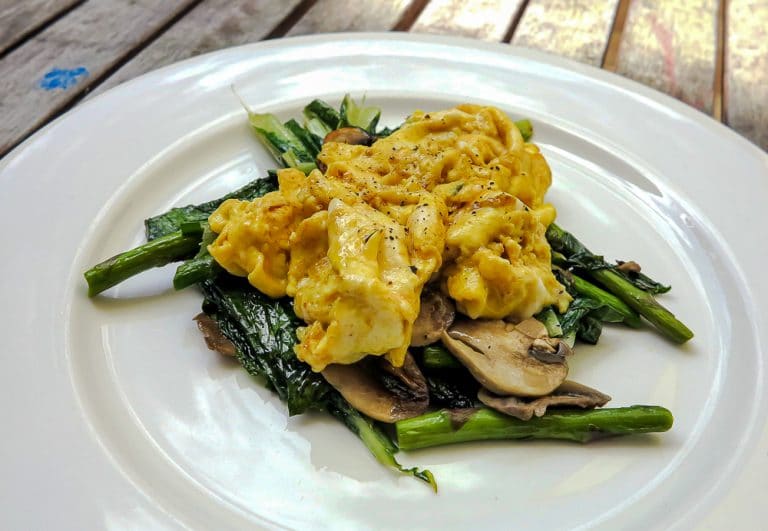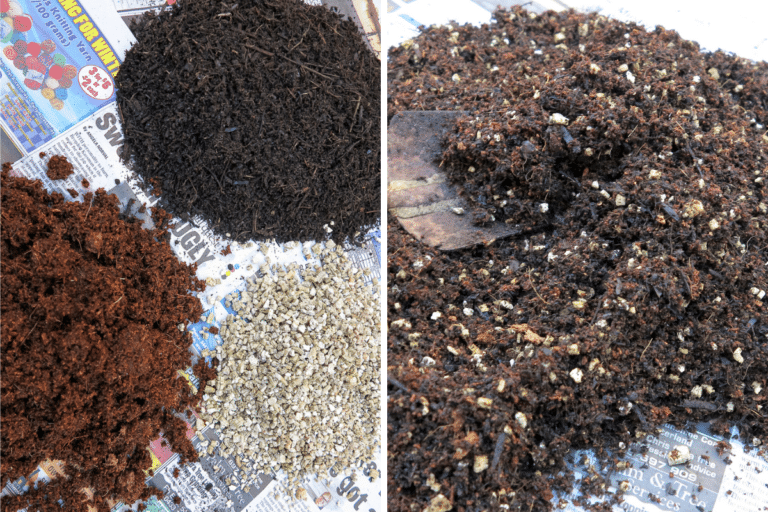9 Easiest Garden Vegetables to Grow to Save Money on Food
This website may earn commissions from purchases made through links in this post.
Growing your own vegetables can save you money and be a satisfying hobby. Here are nine of the easiest garden vegetables to grow.
Looking for a fulfilling hobby that can save you money on food?
Why not start growing some vegetables at home to supplement the grocery budget?
You don’t need to become farmer Jo overnight – even a few alfalfa sprouts on the kitchen counter or herbs at the back door can add some cheap and tasty greens to your diet.
Here are the top nine vegetables that are the easiest to grow at home.
NOTE: I’ve written ‘best practices’ and care tips below, and that can make gardening seem hard. But to be honest, we’ve often just thrown plants in, hoped for the best, learned as we went along, and mostly got a harvest.
I had my first veggie patch as a kid, and I’m not a green thumb! So if I can grow garden vegetables, anyone can!
Two Honorable Mentions that Didn’t Quite Make the List
Two honourable mentions must go to radishes and tomatoes.
While radishes are super easy to grow, they aren’t very popular (and I have a personal bias against them).
But drop some seeds on the ground, completely neglect them, and you’ll still have a crop of radishes. We had them growing between our pavers, and when we lifted the pavers to pick the radishes, they were perfect for eating (if you like them, that is).
On the other hand, tomatoes have a reputation for being a bit fragile and demanding. However, when we’ve grown them, they grew and fruited despite complete neglect. And when the over-ripe tomatoes dropped, they self-seeded and grew again without any care from us. So it’s worth giving tomatoes, especially cherry tomatoes, a go.
Essential Ingredients for Home Gardening Success
If you’re new to growing veggies, you need to know a couple of things to ensure your success.
Top tip for Beginners to Gardening
If you’re new to gardening, start small; a couple of pots of herbs, some lettuce and silverbeet in the garden, or some beans along the fence.
A small garden won’t need a lot of work. Water it regularly (a few pots won’t take long) and maybe give it a feed now and then, but that’s about it. Except harvesting, of course! And it’s cheaper to get started with a small garden.
Plant Containers and Garden Beds
Firstly, your plants will need something to grow in. It might be a pot on a balcony, a garden bed in the ground, a raised garden, hanging baskets, or a vertical garden.
Maybe even a mixture of these!
Plants can grow in pretty much anything, as long as they have enough room – get creative and recycle containers for free or very cheaply to save money.
Sunlight
Most food plants need full sun to grow well and produce vegetables. Full sun means six or more hours of direct sunlight. So finding a spot that gets that much sun is the next step.
If you have partial shade (3-6 hours of sun), don’t despair! It’s perfect for your leafy greens, especially in warmer weather. In fact, in hot weather, keeping them out of the full sun will help them last longer and taste less bitter. Root vegetables will also grow in partial shade, as long as they get some sun.
If you live in a hot climate (like I now do), you might even need to even shade your plants on purpose during summer to prevent sunburn.
Water
Plants also need water to grow. The best water is rainwater because it’s free and it’s mostly free of chemicals, so plants thrive on it.
You can collect water in buckets when it rains to use later on. However, cover with very fine netting to keep the mozzies from laying eggs in the water.
Grey water is not suitable for your vegetable plants.
Having said that, there is water we use in the house that is not grey water but wasted water, and that’s good to use.
For example, the water that goes down the drain while waiting for the shower to get hot. You can collect that water in a bucket for your plants! It has no soap or shampoo in it, so plain old water, not grey. Just remove the bucket once the water has heated to keep it soap-free.
The water you boil your peas (or other veg) for dinner is also not grey as it has no soaps or oils in it. You can use that water, once cooled, to water your garden.
Do you rinse your salad leaves before eating? You can use a basin and pour that water on the garden instead of down the sink.
As long as the water has no soaps, fats or oils in it – in other words, if you would drink it, then your plants can drink it too.
Nutrients
You’ll notice that most veggies are best grown in ‘well-draining soil enriched with compost’.
What does well-draining mean?
It means not hard clay but also not sandy soil either. What’s the best way to get good, well-draining soil?
Add plenty of compost! Other organic matter, like leaf matter, will help, too, if the soil is really hard.
Vegetables need nutrients, and there’s one way to provide nutrients that’s not only free but it also reduces waste. And that’s making your own compost.
For lots of information about making compost at home, check out:
- DIY cheap and easy compost bin
- How to make compost FAST
- How to use a Bokashi Bin (technically not composting but can compost other food scraps)
- Troubleshooting tips for smelly compost bins
You might also want to feed your plants with a liquid seaweed solution through the growing season. Seaweed fertiliser feeds plants, promotes plant health, and may increase yield. It comes as a concentrate and will need to be watered down – follow the instructions on the bottle.
Climate and Timing**
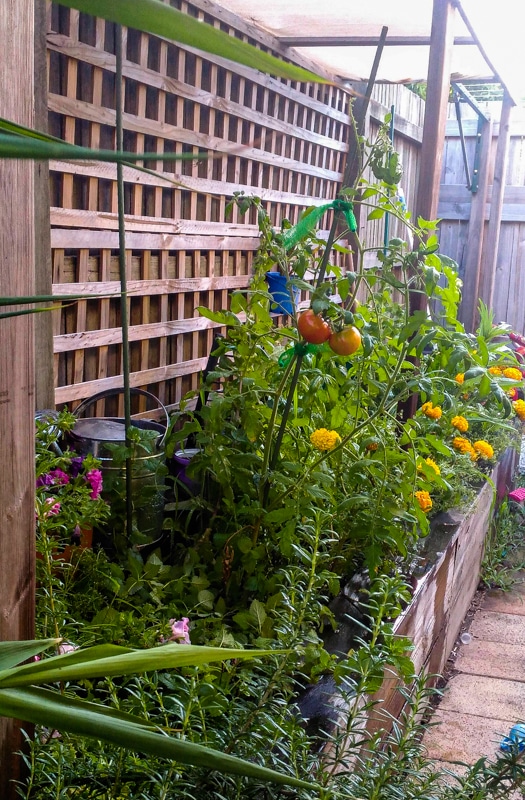
Your local climate will determine when the best time to plant things. That doesn’t mean you can’t grow stuff at other times (like in a greenhouse), but you’ll have more success growing in peak seasons.
Where I grew up – down south, where it snows – we would harvest tomatoes at the peak of summer. Here in the subtropics, they can be grown all year round but tend to do well in the dry season (winter) because there’s less threat of being water-logged or burned by the super-hot sun.
Not sure what growing zone you’re in?
Here’s a map from the ABC with month-by-month guides on what to grow.
**Climate and timing suggestions are for AUSTRALIA and are general – you should check the seed packet/seedling label or local gardeners for what’s best for your area.
Also, it’s a good idea to check the weather forecasts for things like late frosts or imminent storms, floods, fires, hail, cyclones…gotta love our sunburned country!
Should You Grow From Seeds or Seedlings?
Seeds are cheaper to buy than seedlings and free if you save seeds, so if you want to save money, seeds are your best option. Also, some plants, like peas and beans, grow better when you plant them directly from seed.
On the other hand, seedlings are generally easier to grow. You don’t have to worry about germination, special seed-raising mix, or nurturing the seeds and then hardening them off.
I think it’s worth learning how to grow from seed and even trying to save seeds, but seedlings are (with a few exceptions) easier to start with. And even if you’re not a beginner, seedlings will save time and hassle.
9 Easy Foods to Grow at Home
Here are some of the easiest food plants to grow at home.
1. Sprouts and Micro Greens
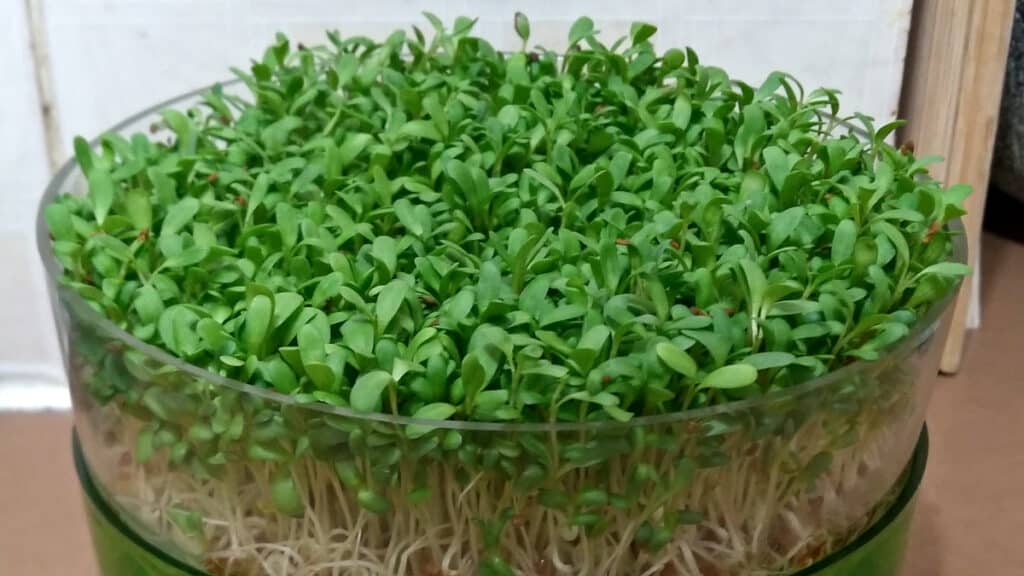
Sprouts and microgreens are the easiest and fastest choice when beginning your food-growing journey. You can grow them in your kitchen, in a jar on the bench – no special tools, no worrying about position, light, nutrients, compost or any gardening know-how.
You just give them a drink of water a couple of times a day.
And you can start eating them in a matter of days.
We use a kitchen sprouter, which you can get at Bunnings, Big W and other stores, but for a cheaper DIY version, all you need is a large, clean, wide-mouth jar, some cheesecloth, muslin, or old, clean pantyhose, and a rubber band.
Place a tablespoon or so of seeds in your jar (fewer seeds for a smaller jar, don’t overcrowd the jar; otherwise, they will go mouldy). Pour some water into the jar, secure the cheesecloth with a rubber band and drain the water. Once drained, rest the jar upside down, at an angle in a bowl or on a dish drainer, so, the water can drain, air can circulate, and the seeds aren’t sitting in water.
Repeat this process a couple of times a day until they reach the desired size. You want to keep the seeds moist without letting them sit in water.
Some sprouts need soaking to germinate (to be honest, we’ve never soaked sprouts, and they’ve always germinated, but it’s warm here in Queensland), so check the packet label for more detailed information.
2. Herbs
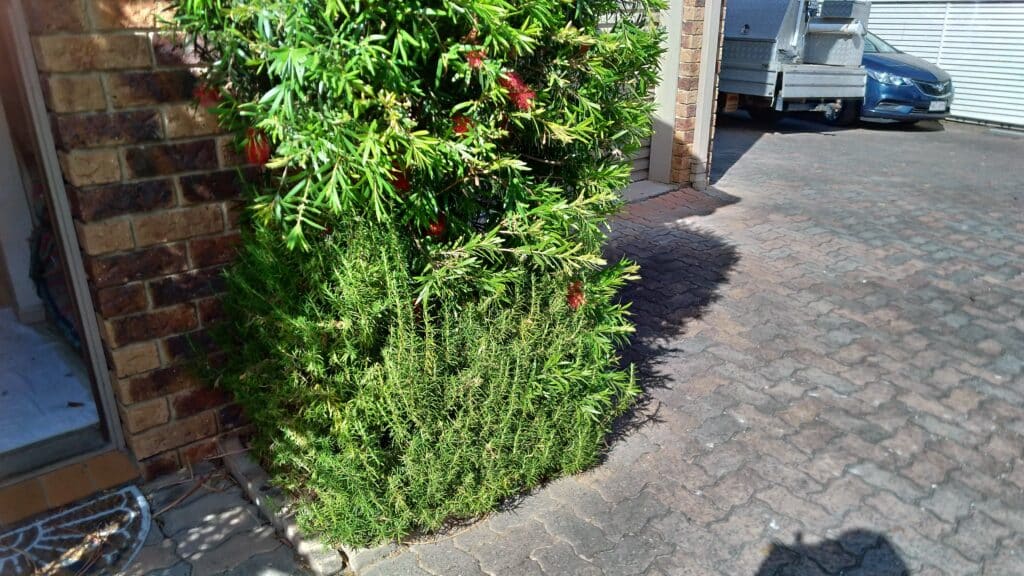
Herbs cost a fortune to buy but are cheap and easy to grow, and they pack in a tonne of flavour to every dish.
And if you only have room for containers, herbs are the perfect choice for container gardening.
Rosemary is hard to kill if you plant it in the ground. We have rosemary at our front door – it never gets watered or fed, competes with a bottle brush growing up through the middle of it, and it’s thriving.
The best herbs to grow are the ones you enjoy eating. For more information on herbs, you can read about the best (IMHO) herbs to grow.
3. Lettuce
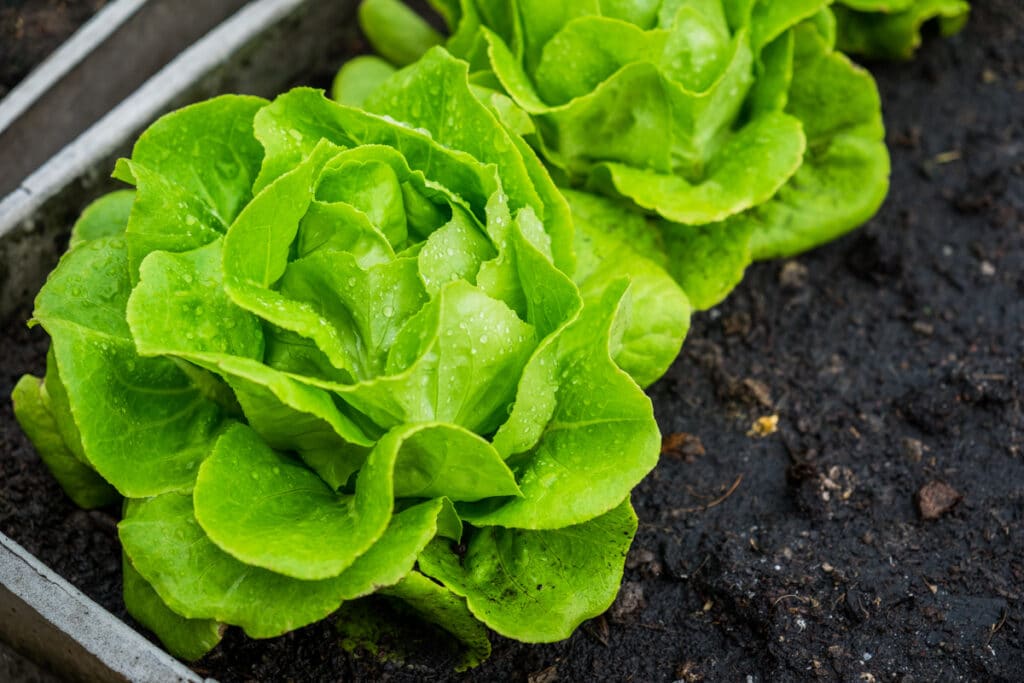
Lettuce is easy to grow in the garden, pots, vertical gardens, or hanging baskets (which help keep the slugs away!). You can start harvesting the outer leaves before the plant is mature, giving you weeks of salad.
Lettuce is a cooler climate plant, although they don’t like frost. Cover them up to shelter them from any late frosts. Hot weather can make lettuce bolt to seed and go bitter, so they are perfect for a shady spot.
Plant new seeds every couple of weeks for all-year lettuce.
Plant from: seed or seedling
Position: sun to partial shade (full shade in hot climates)
Planting time: can be planted all year except in hot climates. Shelter from frost.
Harvest time: 10 weeks to harvest the whole heart, but can start harvesting the out baby leave before then.
Garden tips: Plant in well-draining soil and mulch well to retain moisture.
Container growing: Perfect for all types of container growing.
Care tips: Lettuce have shallow roots, so needs watering regularly. They can go bitter if the soil dries out. Feed periodically (every couple of weeks) with a seaweed solution.
4. Silverbeet
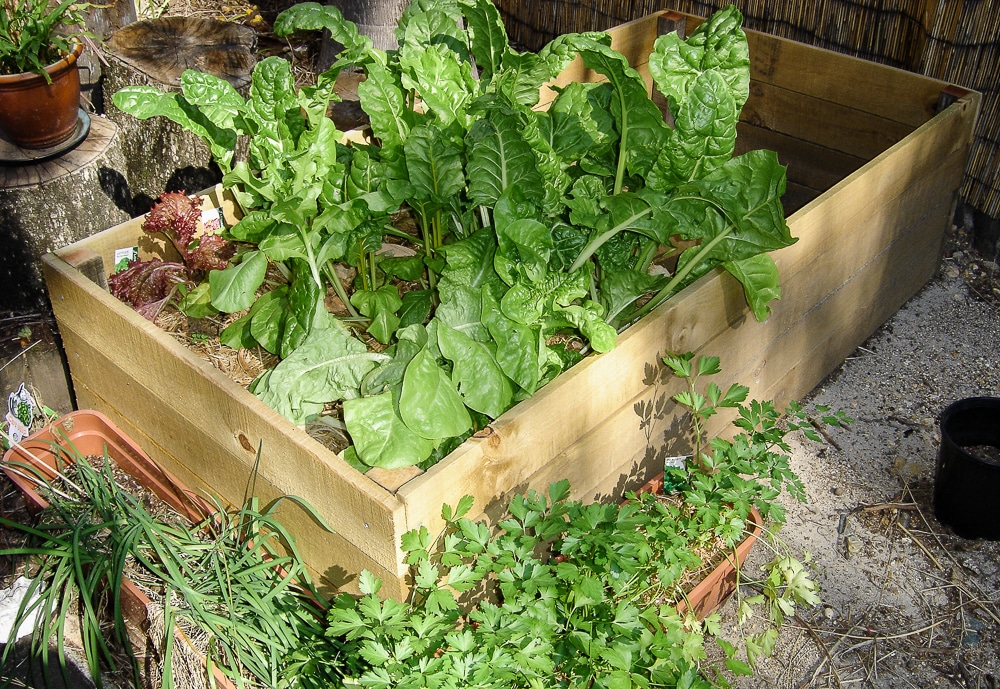
While not the most common vegetable to eat, silverbeet is super easy to grow and, like kale and spinach, very nutritious.
I love to eat silverbeet braised with a bit of butter, although, unlike Jamie Oliver, I don’t cook it in boiling water. I find the water clinging to the leaves after washing is enough to cook them until tender. As the water evaporates, add some butter, salt and pepper, and you’ve got a delicious side, straight from the garden.
Another great way to eat silverbeet is wrapped in filo pastry with mushrooms and feta, or go old-school with pasties and vol-au-vents.
Plant from: seed or seedling
Position: full sun or part shade (part shade in hot climates)
Planting time: cool & temperate areas: spring to autumn; warm areas: all year round.
Harvest time: 8 weeks; cut outer leaves at ground level to promote new leaves and harvest continually.
Garden tips: plant in well-drained soil enriched with compost. Mulch around the base to keep moisture in the soil.
Container growing: silverbeet has deep roots, so for best results, grow in a deep pot at least 120cm tall and 300mm in diameter.
Care tips: water when needed, about every 2-3 days, more when the weather is hot. Feed every few weeks with a seaweed fertiliser.
5. Beans
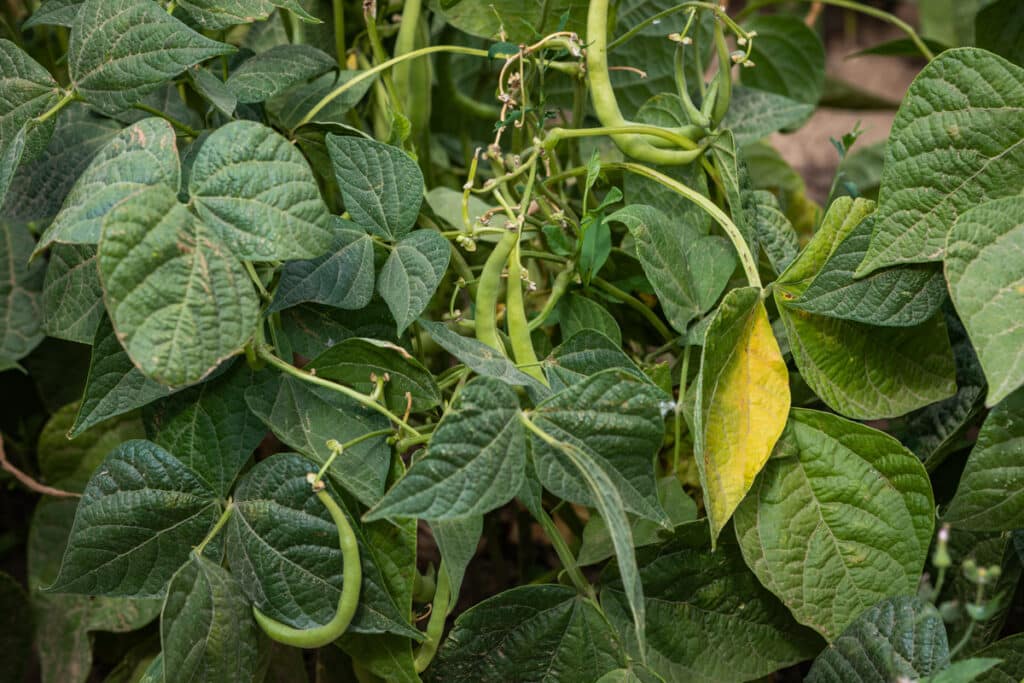
The great thing about beans is they are super low-maintenance. They naturally draw nitrogen from the soil, so they don’t need feeding. They also don’t like to be overwatered, so they can handle plenty of neglect. All they need is something to grow up against.
Plant from: seed about 2cm deep and 10-15 cm apart against supports/trellis. It’s a good idea to plant 2 seeds per hole and thin to one after germinating.
Position: full sun
Planting time: Cool and temperate climates: Sept-Jan. Warm climates: all year round
Harvest time: 12-14 weeks. Pick when young and tender.
Garden tips: many bean varieties will need a climbing frame for support. This could be wire tied to a fence or between stakes, teepee support, or trellis. Grow in well-draining soil enriched with compost. Mulch to keep moist, but keep the mulch away from the stems.
Container growing: can be grown in containers, but most varieties (except dwarf beans) will need a frame to climb.
Care tips: beans won’t need feeding, especially if they are grown in compost, as they can capture nitrogen in the soil. Also, they don’t like to be overwatered, so they are a great low-maintenance veggie to grow!
6. Peppers (Capsicum and Chillis)
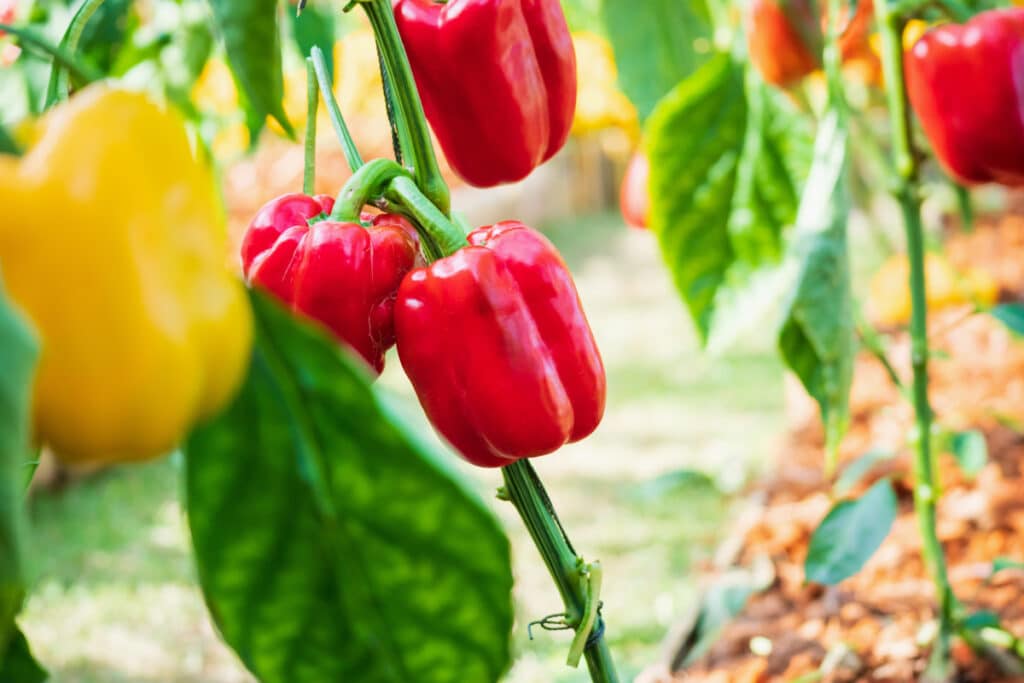
A pot of chillies is a fantastic gift that keeps on giving. They are easy to grow and harvest. So too, are capsicum (bell peppers).
Green, yellow, and red capsicum are all the same variety at different stages of ripeness. For red capsicum, leave them on the plant longer.
Plant from: seed or seedling
Position: sunny position, sheltered from the wind
Planting time: Cool: Sept-Nov; Temperate: Aug-Dec; Warm: all year
Harvest time: 10-12 weeks
Garden tips: grow in well-draining soil enriched with compost.
Container growing: choose a good-sized pot and position it in a sunny spot away from strong winds. Capsicum has deep roots, so a pot at least 50cm tall is good. Grow one per pot.
Care tips: keep them well watered, watering roots, not leaves. In really hot areas, shade in summer to prevent burning. Mulch to keep from drying out. Feed with seaweed fertiliser after it starts fruiting.
7. Strawberries
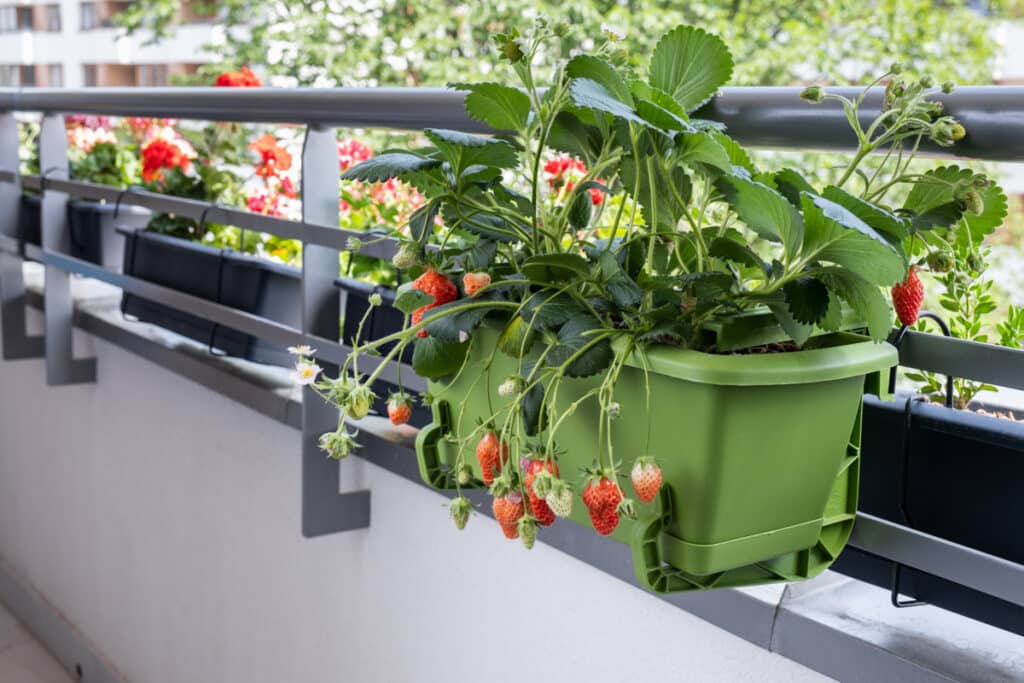
When I was a kid, my dad gave me a vegetable garden, and I grew enough strawberries to eat and sell. It was my first source of income, and profitability depended on my strawberries doing well. So I’ve had a bit of experience growing them.
Strawberries are very easy to grow and delicious to eat. They are also super-easy to propagate, giving off runners you can cut off and replant. It’s a good idea to cut them off, so all the plant’s energy goes to growing fruit!
Plant from: seedling or runner
Position: full sun to part shade, sheltered from the wind
Planting time: all year in cooler climates, May-June in hot climates
Harvest time: 12-15 weeks after planting
Garden tips: grown in well-draining soil enriched with compost. It’s a good idea to create mounds to increase drainage. Don’t plant where tomatoes, eggplants, or capsicum have been growing.
Container growing: strawberries are ideal for pots, hanging baskets, and vertical gardens. Water to keep moist.
Care tips: mulch with straw to keep berries off the dirt. Water at the roots and avoid watering the leaves. For more fruit, feed them with seaweed fertiliser when flowering and then again every few weeks. You might want to cover the fruit with some netting to keep the birds from eating your strawberries. Prune the plants hard after fruiting and replace them every 3-4 years.
8. Peas
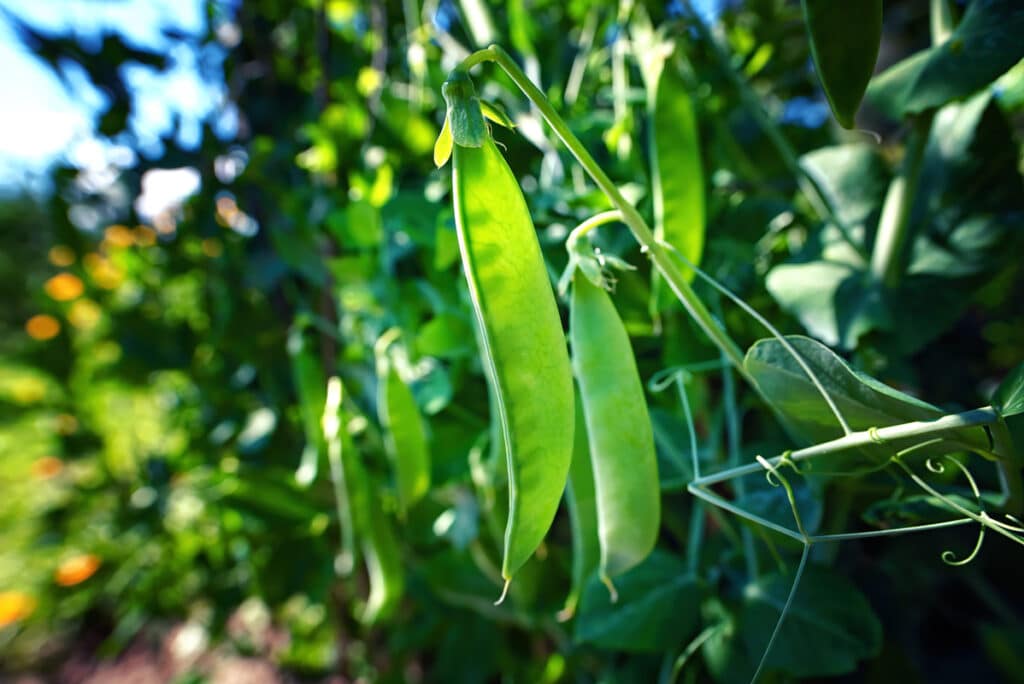
There’s nothing sweeter than fresh baby peas picked and eaten raw straight from the garden.
Of all the vegetables, peas give me the fondest childhood memories: shelling them on the backstep at my nanna’s house, colander between my knees, or foraging for some in our veggie patch when we got hungry from playing.
Peas are a cool climate vegetable, so if you live in the tropics, you probably won’t have much luck growing peas.
Plant from: seeds at a depth of 2 cm
Position: Full sun
Planting time: Cool areas: Autumn to Spring (doesn’t like frosts); Warm: Winter maybe, but not recommended
Harvest time: 10-16 weeks. Harvest regularly to promote more growth
Garden tips: plant in well-draining soil enriched with compost. Some peas will need support, so grow against a trellis or other support.
Container growing: can be grown in pots, sheltered from strong winds.
Care tips: Water pea seeds well when planting, then don’t water them again until they have sprouted.
9. Zucchini
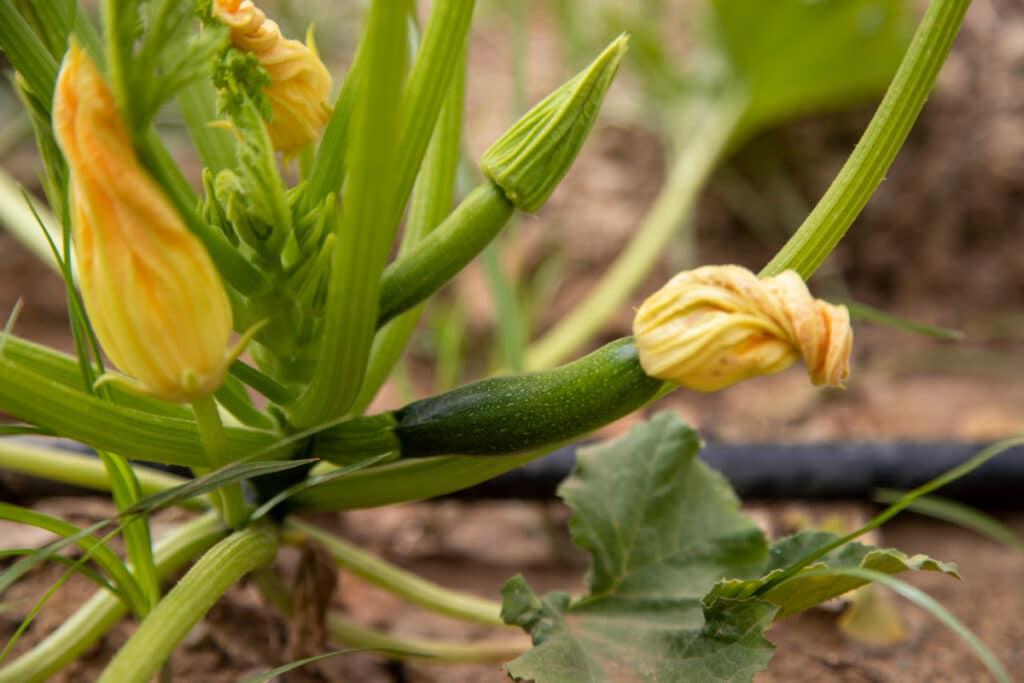
Zucchinis are easy to grow but need a fair bit of space, so they are best grown in a garden bed. Pick the zucchinis before they get too big for the best flavour.
Plant from: seed or seedling. To plant from seed, plant 3-4 seeds flat at a depth of about 2 cm and 50cm apart. Thin the seedlings to the strongest.
Position: full sun, sheltered from the wind
Planting Time: Cool: Oct-Jan Temperate: Sept-Jan, Warm: all year round
Harvest Time: 6-8 weeks
Garden tips: grow in well-draining soil enriched with compost. Mulch around the plant to retain moisture.
Container growing: best grown in the garden.
Care tips: Zucchinis like plenty of water, so regular watering is necessary. Water the soil rather than the leaves to avoid mildew.
If you live in a cold climate, you can start seeds in pots indoors before transplanting after the frosts have gone.
Zucchinis need to be pollinated. This is usually a job for bees and insects and not something we typically have to worry about. Except bees are becoming scarce.
If you don’t have a lot of bees, you can use a paintbrush to pollinate the female flowers (they have baby zucchinis attached) with the male flowers (growing on bare stalks) by brushing the stamens of the male flowers and transferring the pollen to the female ones.
Growing your own easy vegetables can save you money and be a fantastic hobby for you or kids that gets you out of the house, away from screens, and into the fresh air. There’s also some evidence it can be good for mental health!
While I’ve shared ‘best practices’ in this post to help you get the most success, gardening can be as easy as throwing some seeds in the ground – just like plants have done for thousands of years without us!

